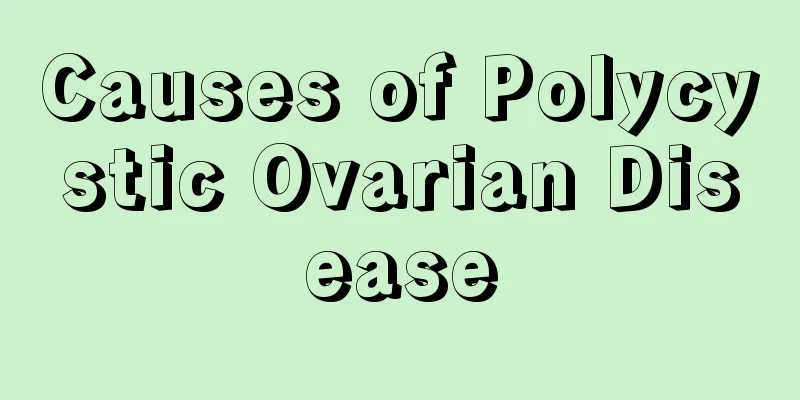Causes of Polycystic Ovarian Disease

|
Polycystic ovary syndrome is a common complex disease in women, and with many female patients ignoring it, the incidence of polycystic ovary syndrome is getting higher and higher. Polycystic ovary syndrome is a disease of endocrine and metabolic abnormalities, and its causes are very complicated. Polycystic ovary can cause great harm to women's health, so it is necessary to find out the cause and treat it with medication in time. Causes of Polycystic Ovarian Disease 1. Hypothalamic-pituitary function problems Hypothalamic-pituitary-hypothalamic function problems are the key reason why women cannot get pregnant, reflected in the aromatase converting the excessive male hormones in the female patient's jugular vein into unnecessary male hormones, or abnormal metabolism of steroid hormones produced by the female ovaries. Finally, it causes female patients to ovulate slowly or not. 2. Hyperprolactinuria Because many patients with polycystic ovary have PRL kinase in the adrenal cytoplasm, it stimulates female adrenal cells through the secretion of androgen. This is the reflection of hyperprolactinuria in patients with cystic uterus and ovary. 3. Abnormal adrenal function The vast majority of female patients will have metabolic abnormalities and abnormalities in the relationship between the hypothalamic pituitary-uterine ovarian axis. These are all caused by the continuous increase in the metabolism of male hormones due to adrenaline in patients with PCOS. 4. Genetic factors Some female patients with polycystic ovary have symptoms due to abnormalities in the number and structure of sex chromosomes X and the absence of the long arm of chromosome X. Although the normal karyotype is possessed by the vast majority of patients. This is probably caused by inheriting a dominant gene. Early symptoms of polycystic ovary syndrome 1. Menstrual disorders: The most common symptom of cystic ovary syndrome is irregular menstruation. Patients usually experience infrequent menstruation and amenorrhea. Many patients also experience symptoms of non-menstrual bleeding in the uterus, and the menstrual cycle and menstrual volume are very irregular. 2. Infertility: Polycystic ovary syndrome can hinder women’s ovulation period, leading to infertility. 3. Excessive hair and acne: Women with polycystic ovary syndrome usually have excessive hair. This is caused by hyperandrogenism, which causes the growth of hair on women's bodies to show a masculine trend. It can also cause oily skin and acne in women because the male hormones in the patient's body excessively stimulate the sebaceous glands. 4. Obesity: More than half of the patients with polycystic ovary syndrome suffer from obesity, which is the most clinical symptom of this disease. |
<<: Causes of recurrent fever due to mastitis
>>: How to reduce fever physically during confinement
Recommend
How many days does a woman's menstruation last?
Women are a special group, which is not only refl...
How to make multi-grain pancakes crispy? Tips for making multi-grain pancakes crispy
When you are at home on weekends, you may want to...
How to make breasts bigger?
Nowadays, women who love beauty have never stoppe...
Symptoms of one month pregnancy
It is a very happy thing for a woman to be pregna...
What causes breast pain during puberty?
During the development process, the breasts are g...
Natural disaster or man-made disaster? Tracing the development of Zhu Ting's wrist injury along the timeline
On July 26, Beijing time, the Chinese women's...
Treating uterine cold in this way will make it easier for you to get pregnant
Many women in today's society have uterine co...
How to get pregnant quickly with a unicornuate uterus
Unicornuate uterus is a congenital disease that o...
What are the characteristics of female frigidity
Sexual development is a necessary process before ...
How to relieve swollen feet during pregnancy
Women will experience some pregnancy reactions du...
Can pregnant women eat Chaos?
Wonton is also a kind of pasta, and wonton is som...
The advantages and disadvantages of calcium supplementation for women
The long-term lack of high-quality protein in the...
What to do if a woman has pain on the left side of her lower abdomen
What we do is that once female patients have vary...
Correct sitting posture with pelvic anterior tilt
In daily life, very few female friends will suffe...
Why is there a yolk sac in the gestational sac?
What is the reason for seeing the yolk sac inside...









